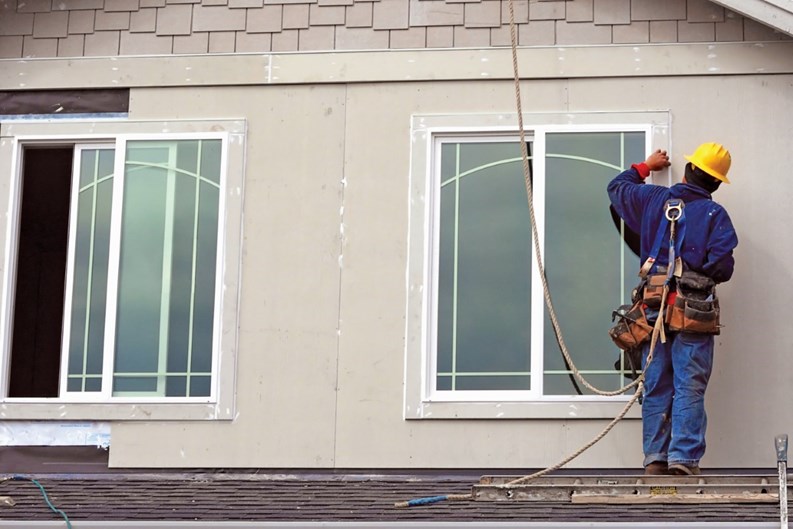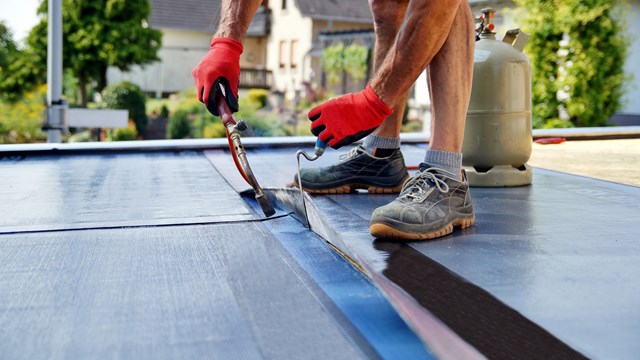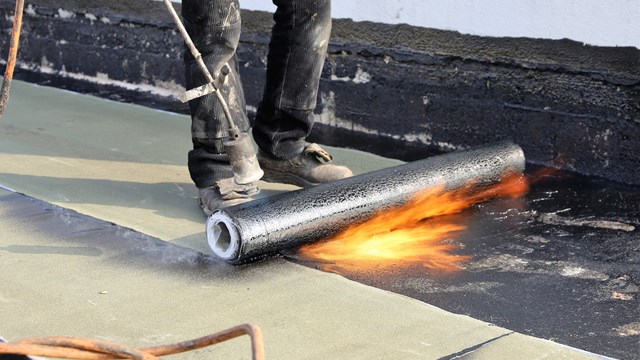When condo-dwellers think “catastrophe,” it’s usually something dramatic, like a fire or huge storm laying waste to their HOA. There’s another, far more insidious enemy of urban and suburban condo buildings, however: H2O. Water damage may not have the same photogenic impact of fire, but the havoc caused by it can be staggering, and can linger for years after the initial leak has been resolved.
Because of the potentially devastating effects of water-related headaches like mold, mildew, structural damage, and property loss, association administrators and staff should have a general understanding of the makeup, maintenance, and repair of their building’s waterproofing systems. Watchful eyes now can save many thousands, or even millions of dollars in repair costs later.
Keeping Dry
Every residential building has mechanisms that prevent water from seeping into the structure, but even when these systems are in top condition, they don’t make the building truly waterproof. Rather, they help to make the building resistant to water infiltration. The degree to which the systems keep the building dry depends upon how well they were installed, and how they are maintained.
The roof of a building is the linchpin of its waterproofing system, but the drainage system for the roof—be it the downspouts on small buildings or the larger internal roof drainage pipe known as a “leader” found in larger buildings—is also vital in keeping a building dry. Because the leader and downspouts take water off of a roof when it rains or snows, even a small blockage of that drainage system can back things up and quickly cause water damage to the building.
Essentially, roofs in urban and suburban HOAs come in one of two formats: flat, and pitched. Most urban roofs are of the flat variety, made up of several different types of material sandwiched together like the different layers of a person’s skin. Those materials usually include a substructure of steel under a concrete deck, topped with a “vapor barrier” like tarred paper. Over that goes a layer of insulation several inches thick, which is in turn topped by a waterproof membrane—and a decorative decking material, in some cases.
The waterproof membrane functions much like the skin’s epidermis, serving as the first—though by no means impenetrable—line of defense against the outside environment. Unlike our skin, however, roofs can only be expected to last between 10 and 25 years.
According to Lenny Capriglione of Aiese & Associates Contracting in Matawan, waterproofing materials and techniques differ between flat- and pitched-roofed residential buildings, despite having a common purpose. “It depends on the style of roof,” says Capriglione. “The actual material differs from shingles—which you would use on a pitched roof—versus hot tar or a modified roof which is made for a flat surface or a TPO, which stands for thermoplastic polyolefin, which is a waterproof thermal insulation membrane.”
Pitched roofs don’t lend themselves to the same types of rolled- or poured-on water barriers that work so well on flat roofs, Capriglione continues. “You don’t really waterproof a [pitched] roof,” he says. “There are no real coatings for shingled roofs. With a shingled roof, if you have a repair, it’s a repair—there really aren’t any coatings you can apply to them.”
According to Capriglione, whether pitched or flat, “The main point of water infiltration is the roof. The second is probably the roof’s drainage system. A lot of people think they have a roof leak, but it’s really water going into drainpipes and getting backed up. Really it depends on how much it rains and how much roof water actually goes into that drain. Sometimes it can be an elbow that’s loose on a drainpipe or something other than a roof needing repair. Plenty of associations assume their roof is the problem until they get more involved and find that it’s really just the drains on the roof.”
Flashing on the roof, caulking around windows and doors, and mortar joints in a brick or stone façade also are integral parts of a building’s weather defense system. “Any penetrations into the roof, anywhere your chimney, bathroom or regular venting…penetrates the roof’s surface would be suspect,” Capriglione continues, “as well as doors and windows on the siding.” Keeping an eye on these various components to ensure they’re in good shape is almost as important as correctly installing them in the first place.
Getting Soaked
Failure to mind these critical aspects of a building’s waterproofing system can cost residents more money in the long run, according to Barry Grummer of Kay Waterproofing Corp. in Manhattan. “When you don’t check for leaks consistently, a little bit of water will get in and start to cause damage. Good preventative maintenance is really important. People wait until things leak, and by then it’s a big deal.”
But how can your manager, super, or regular residents recognize the symptoms of seepage? Water making its way into a building leaves telltale signs, for those who are able to spot them,” says Capriglione. “A lot of people don’t realize that the joints of the brickwork—the mortar joints—actually let water into the brick. So, it’s very important for your waterproofing to be behind the brick. What happens is you get a lot of supers that go around caulking various areas of the brickwork because they think that’s where the water’s coming from. But around windows and doors where there’s a piece of steel that’s holding up the brickwork, if you don’t leave those open to let the water out of the brickwork, you could cause a leak or more of a problem damming up the water instead of letting the it out.”
Residents should also be on the lookout for rust, which can quickly damage or destroy property. Rust stains can bleed through concrete or other masonry, showing that metal inside or attached to the masonry is rusting and less structurally sound than it should be.
Capriglione says that irregularities in features like brick can indicate underlying water damage. “If you’re looking at your building and see a bulge in your brickwork, that likely means that the metal ties holding the brick to the building have corroded and the brick has shifted.” He says that corrosion of structural elements is another byproduct of water infiltration over time. On pitched roofs, Capriglione adds that lifting or peeling shingles and damaged or missing flashing are signs of impending leak issues.
For hi-rises, in particular, Grummer says that boards should look for cracking in the masonry on the building‘s exterior. Such warning signs, like rust stains, are a red flag saying that work needs to be done on the building. Even small cracks in the exterior cannot be left untreated, because those cracks will allow the water in—creating more problems.
Costs & Disruptions
The cost of a major waterproofing project varies, depending upon the size or number of buildings involved and the amount of work that needs to be done.
So whether your structure is a brand-new townhouse construction or an historic landmark, the impact of an untreated water leak can be devastating to both individual residents and your community as a whole. A program of conscientious maintenance, vigilant observation, and proactive prevention can save your association untold dollars and provide leak-proof peace-of-mind.
Jonathan Barnes is a freelance writer and a frequent contributor to The New Jersey Cooperator and other publications.







Leave a Comment